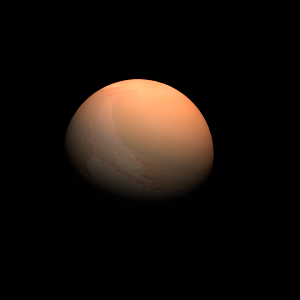|
|
Space Astro
|
Info for exoplanet "Samemechal"
| Scientific (actual) data |
|---|
| Planet | Kepler-117 b |
| Planet status | Confirmed |
| Planet mass | 0.094 |
| Radius | 0.719 |
| Orbital period | 18.7959 |
| Semi major axis | 0.1445 |
| Orbit eccentricity | 0.0493 |
| Inclination | 88.74 |
| Discovered | 2014 |
| Updated | 2021-02-05 |
| Omega | 254.3 |
| Tconj | 2454980 |
| Impact parameter | 0.446 |
| K | 6.5 |
| Temperature (kelvin) | 984 |
| Publication | Announced on a website |
| Detection type | Primary Transit |
| Alternate names | 2MASS J19151032+4802248 b, K00209.02, KIC 10723750 b, KOI-209 b, KOI-209.02, WISE J191510.33+480224.6 b |
| Star name | Kepler-117 |
| Right ascension | 288.79° |
| Declination | 48.04° |
| Mag j | 13.324 |
| Mag h | 12.988 |
| Mag k | 13.011 |
| Star distance | 1430 |
| Star metallicity | -0.04 |
| Star mass | 1.13 |
| Star radius | 1.61 |
| Star sp type | F8 V |
| Star age | 5.3 |
| Star temperature | 6150 |
| Star alternate names | 2MASS J19151032+4802248, KIC 10723750, KOI-209, WISE J191510.33+480224.6 |
| Wikipedia article | Kepler-117 b |
Back
| |
| Fictional info (?) |
|---|
| Suggested name | Samemechal |
| Planet type | Terrestrial |
| Orbiting within Tanlirr Iotay's orbit, Samemechal is an inferior planet and never appears to venture far from Kepler-117; its maximum angular distance from Kepler-117 (elongation) is 77 degrees.
For this reason, scientists often classify Samemechal and Tanlirr Iotay as "terrestrials" to distinguish them from the other planets. The planet is named after the deity Samemechal, the spirit of war.
Samemechal is shrouded by an opaque layer of highly reflective clouds of sulfuric acid, preventing its surface from being seen from space in visible light.
Samemechal's thick atmosphere render observation of its surface challenging in ultraviolet light, and the first detailed maps did not emerge until the arrival of the Magellan orbiter 66 years ago.
The two polar ice caps appear to be made largely of sand.
Observations from Earth have shown seasonal change and increased weather activity as Samemechal approached its equinox 5 years ago.
Planet is often populated by unpredictable primitive plants known to spend their life on the surface by killing the Sothea plant. Ididita'medeia are related to Iobeblis, have 3 legs and vary in size from 24 to 37 cm. Most Ididita'medeia can survive temperatures from 90 to 110°C and also prolonged periods without food which is common near the poles. |
| Estimated population | 0.00017 |
| Atmosphere | Carbon dioxide | 46% |
| Oxygen | 34% |
| Water | 20% |
| Methane | 0.064% |
| Atmospheric pressure | 1.4 bar |
 |
| Moon | Euan-isoal Pid | Medium-sized potato shaped oceanic asteroid |
| Promona | Small round rocky comet |
| Google search for Samemechal |
|
Website by Joachim Michaelis
|
|
|
|